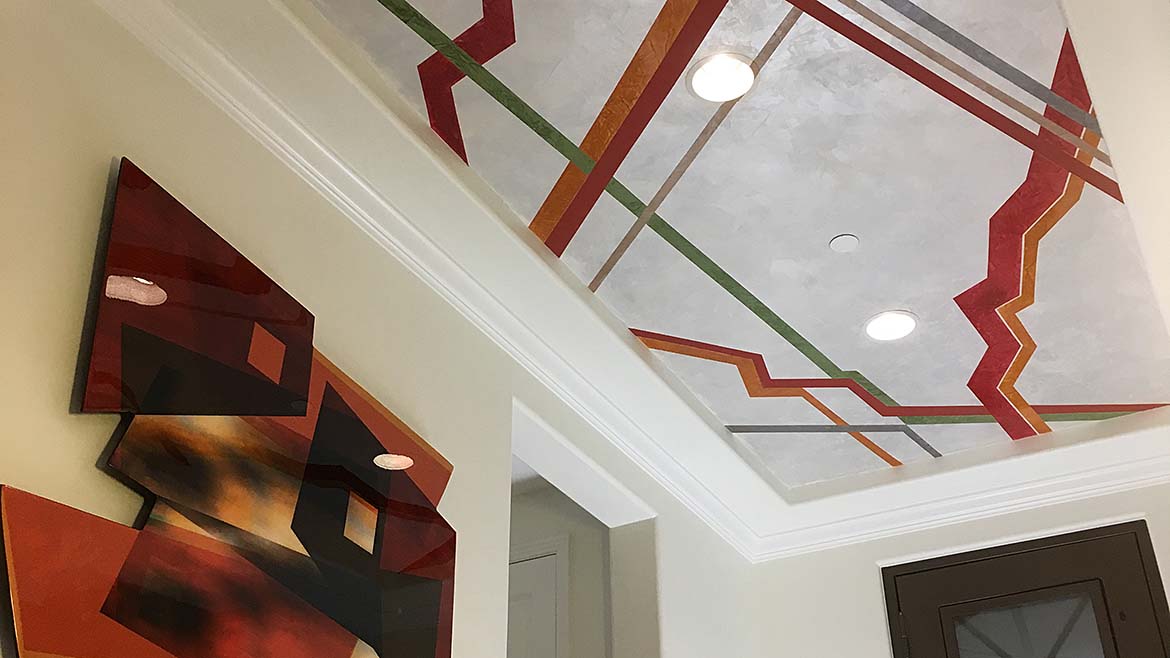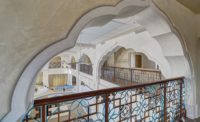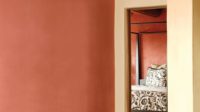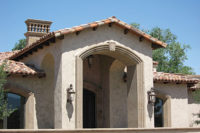Decorative Plasters Market Study
How prevalent are decorative plasters in the United States?

When I was given the opportunity to write an article on decorative plasters for Walls & Ceilings, I quickly decided the article should be focused on how the plasters are faring in the U.S. I have been out of the broad market since leaving a national company six years ago, so my current knowledge of the U.S. market has waned. Therefore, I needed help in assessing the performance of decorative plasters in today’s economy.
I decided to approach acquaintances in six different sectors of the U.S. to assist me by assigning them to answer a list of six questions relevant to the market for decorative finishes. The bulk of this article will focus on the answers each responded to for the questions. However, I first will address the actual products being sold for decorative wall and ceiling finishes for interior residential and commercial construction.
Products
Lime-based Plaster: Mostly used for “Venetian” finishes and applied in multiple thin coats to create a polished, marble-like finish.
Acrylic Finishes: Based with acrylic resins and fine powders and can be applied to achieve multiple smooth or textured finishes with unlimited color options. These finishes are also available in abuse-resistant compounds with very sustainable quality.
Marmorino: An Italian-born finish made with lime and marble dust. It creates a very smooth or lightly pitted stone-like finish.
Gypsum Finish Plaster: The first wall finishes available in the U.S. were made with very fine-processed gypsum and additives applied to various surfaces. Manufacturers are in the process of developing new versions of gypsum plaster for more decorative appeal.
Faux Paints: Applied with decorative paint techniques that mimic the appearance of other materials, such as wood, marble or stone.
Metallic Finishes: Coming on board with new manufacturers. They have multiple metal effects, such as silver, gold and bronze.
Tadelakt: Moroccan architecture developed waterproof plaster that may be used in showers, pools and more.
Clay: Earthen powder made in various color shades with a soft, natural appearance.
Drywall Joint Compound Plaster: Two U.S. companies color natural joint compound and apply it with a system that creates a plaster-looking finish.





Manufacturers
Nineteen decorative plaster brands are manufactured and distributed throughout the U.S.
Eight decorative plaster brands are manufactured in Europe, the Middle East, Japan and China and are imported into the U.S.
Six Market-savvy Participants
Each participant was given the following six questions to reply with answers in print or via phone conversation.
- Product you most often apply – i.e. lime-based, acrylic, Marmorino, gypsum-based, faux paint
- Growth trends for decorative plaster in your geographic market
- Range of prices attainable – e.g. $5-7 per square foot or $25-30 per square foot
- Competitive tendencies in your markets – very, moderate or open
- Construction types you focus on – commercial or residential
Smooth finishes, textured finishes or both
Facts about the Subjects’ Companies
New York City: Probably the largest distributor for decorative and functional plasters in the U.S., the man I spoke with from this area is the only distributor in the Savvy Six, thus he was excused from answering the six questions.
The man from New York City is in touch with more than 1,000 architects in New York and several other cities. He makes and distributes plaster samples in sets of 20 to serious designers. Color matching is capable of matching colors on any paint or finish color chart.
He has distribution warehouses or distributors in 12 U.S. cities—he purchases finish products in large quantities, including full freightliners monthly from Europe and Japan.
He has close ties with finish applicators in many markets. He recommends that applicators make their own samples for projects.
Philadelphia: The first decorative plasterer of which I was aware. He purchased his plaster from a Phoenix dealer in the early days of decorative plaster. His answers:
1.Lime-based Venetian plaster, Marmorino and cement-based plaster.
2. Wide open competitive tendencies.
3. Pricing is attainable – $25-35 per square foot.
4. Types of construction – high-end residential and commercial.
Detroit: This person is the chief executive officer of the Finishing Contractors Association, which is the largest union-based organization of contractors for all construction finish trades. Plasterers represent approximately 20 percent of the 2,000 members. His answers:
1.His crews apply lime-based Venetian plaster, acrylic, Marmorino, gypsum plaster and faux paint.
2. Decorative plaster is seeing significant growth, especially in high-end residential and commercial projects.
3. Competitive tendencies are moderate. Expertise in niche products, like Venetian plaster, and the ability to deliver custom, high-end finishes help you to stand out in the market.
4. Prices for decorative finishes can vary significantly. Basic is $5-7 per square foot. Intermediate is $8-12 per square foot. High-end custom is $13-20+ per square foot.
5. Construction types:
- commercial – decorative plasters are used extensively in hotels, restaurants and office buildings.
- High-end residential—there is a strong demand for luxury homes.
- New and existing construction—both new buildings and renovations see the application of decorative plaster.
6. Smooth finishes are more popular than textured finishes.
San Antonio: The first salesperson in Texas to promote decorative finishes, he is now a leading plaster applicator. Acrylic finishes are his forte. He specializes in high-end commercial, new and renovation construction and often does interior and exterior decorative finishes. His pricing is confidential, as most of his work is negotiated with large general contractors.
Albuquerque, N.M.: The inventor of two acrylic-based product lines (one is primarily decorative and the other is abuse-resistant), he is now a full-time plaster applicator with one partner. They specialize in interior decorative finishes with prices of $5-7 per square foot. They do both high-end new residential and restoration, usually over existing gypsum plaster.
Another application specialist in Albuquerque sells a unique decorative finish using regular drywall joint compound with added colorant in a three-step process. He does this application over new Level 3 drywall or existing painted walls. His pricing ranges from $3.85 to $4.85 per square foot.
Tucson, Ariz.: Of the six participants in this market study, this woman is the most “hands-on” with decorative plaster. While lime-based Venetian plaster is her predominant product, she has approximately 80 different plaster finishes in her portfolio.
Most of her work is high-end residential construction, although she has occasional commercial projects. Her prices range from $8-30 per square foot. The significant variation is a function of the job site complexity. She requests that the builder have the drywall finished to Level 5 with primer.
She is a member of the International Decorative Artisan's League, is on its board and serves as education chair. With over 500 members, IDAL is the largest decorative arts organization in the U.S.
Palm Springs, Calif.: This person has spent many years in the paint and decorative plaster business in southern California. He is a strong proponent of acrylic plaster but also lime-based, Venetian, Marmorino and, of late, Tadelakt. He does occasional faux paint for accents. His primary markets are high-end residential and golf clubhouses.
His prices range from $7-13 per square foot. The pricing in his market is competitive but not cutting. He sees his market area remaining steady, as high-end homes and commercial mostly include decorative plaster.
Conclusion
Decorative plasters have earned acceptance in the construction and restoration markets consistently throughout the United States. There is no doubt the future is positive.
Looking for a reprint of this article?
From high-res PDFs to custom plaques, order your copy today!






